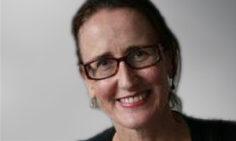A FORMER colleague recently told me about her struggle to get corporate sponsorship for a science communication project.
“Oh, no”, a number of potential sponsors had responded. “We wouldn’t want to support anything controversial.”
Just when did science, and the communication of it, become controversial — not because of any particular subject matter, but simply because it is science?
Part of the answer lies in commercial interests whose profitability may be threatened by scientific understanding.
If you can’t make cigarettes safe, then attack the science that says they aren’t — this was the strategy adopted for decades by Big Tobacco. More recently, similar strategies have been adopted in relation to climate change by those with an interest in carbon-emitting industries.
Add to that the general lack of scientific literacy in the community and even among policymakers, including a lack of understanding of the scientific process and the uncertainties that are intrinsic to it.
What can scientists do to get their messages across in the face of such challenges?
Papers from last year’s Science of Science Communication colloquium, held at the US National Academy of Sciences, have just been published and they raise some intriguing ideas.
Many looked at how science communication could help improve the decision-making processes of both policymakers and the general public, particularly in areas where a higher level of uncertainty exists around the science itself.
How could men, for example, be helped to interpret the risks, benefits and outcomes of prostate-specific antigen (PSA) screening? Or politicians to evaluate the risks of climate change?
Suggestions for better communication of science ranged from detailed protocols for describing uncertainties, to ways scientists might be able to increase the “warmth” of their delivery.
Some argued scientists should model their communications on the science stories that achieve the greatest popularity on social media, adopting more emotional language and emphasising the dramatic and surprising.
If social media is the benchmark, sprinkling a few pictures of cute kittens through every scientific paper should do the trick.
Pandering to online popularity contests obviously poses its own risks. Other papers warned that the hunt for “clickability” and “shareability” ran the risk of undermining the integrity of the science and obscuring those ever-present uncertainties.
I was particularly taken by one group’s strategy for communicating with a notoriously intractable group — teenagers. It harnessed video game techniques to promote safer sexual practices in adolescent girls.
Associate Professor Julie Downs and colleagues from Carnegie Mellon University, developed the interactive video after their research found girls often felt little ability to change the trajectory of sexual scenarios. They also had little understanding of the relative risk of various behaviours and tended to conclude there was no point in using condoms because they had been told in health classes they were not 100% safe.
“Adolescents tended to think of behaviors as either risky or completely safe, which led to a general failure to appreciate the benefits of risk reduction”, Professor Downs wrote.
Modelled on a choose-your-own-adventure story, the video set out to address these issues, highlighting points where the girl might make different decisions and using the storyline to clarify the risk level of various behaviours.
A pilot evaluation revealed a significant decrease in self-reported sexually transmitted infections, as well as increases in abstinence and correct condom use, in those exposed to an early version of the video.
There’s no magic bullet when it comes to effective science communication but these kinds of creative approaches — provided they avoid dumbing down the science — might well be a useful addition to the armory.
Jane McCredie is a Sydney-based science and medicine writer.

 more_vert
more_vert
First, get epidemiologists to stop talking to the press. Get everybody else to only talk to them if they, the scientist, is not being an idiot. Remember the stupid idea that taking multivitamins increased the risk of breast cance by 17% (not 16%, not 18%, but 17%). I bet that the study examined way more than 20 variables, came up with one that was statistically significant an published it. Of course they came up with a correlation, they studied so many variables. Never mind that no causation can be found in such a study and that the finding was not biologically plausible.
One of the reason’s for the controversy is that people are stupid. When Toowoomba rejected flouridation, it was because of the public. The only people who stood to lose money from flouridation were dentists. I’m pretty sure that the dentists of Toowoomba were not secretly funding the nut jobs that complained that flouride was a toxic waste product.
People are stupid about determining risk and probability, which is what your article is about. There are any facets to “science”: school subjects, space exploration, kids playing with water in the bath, probabiliy, climate change, flouride, cancer, asbestos. I think that the next time somoene wants corporate funding and don’t get it, they take a look in their own mirror. Who knows what the corporate gatekeeper thought of when they heard the ‘s’ word.